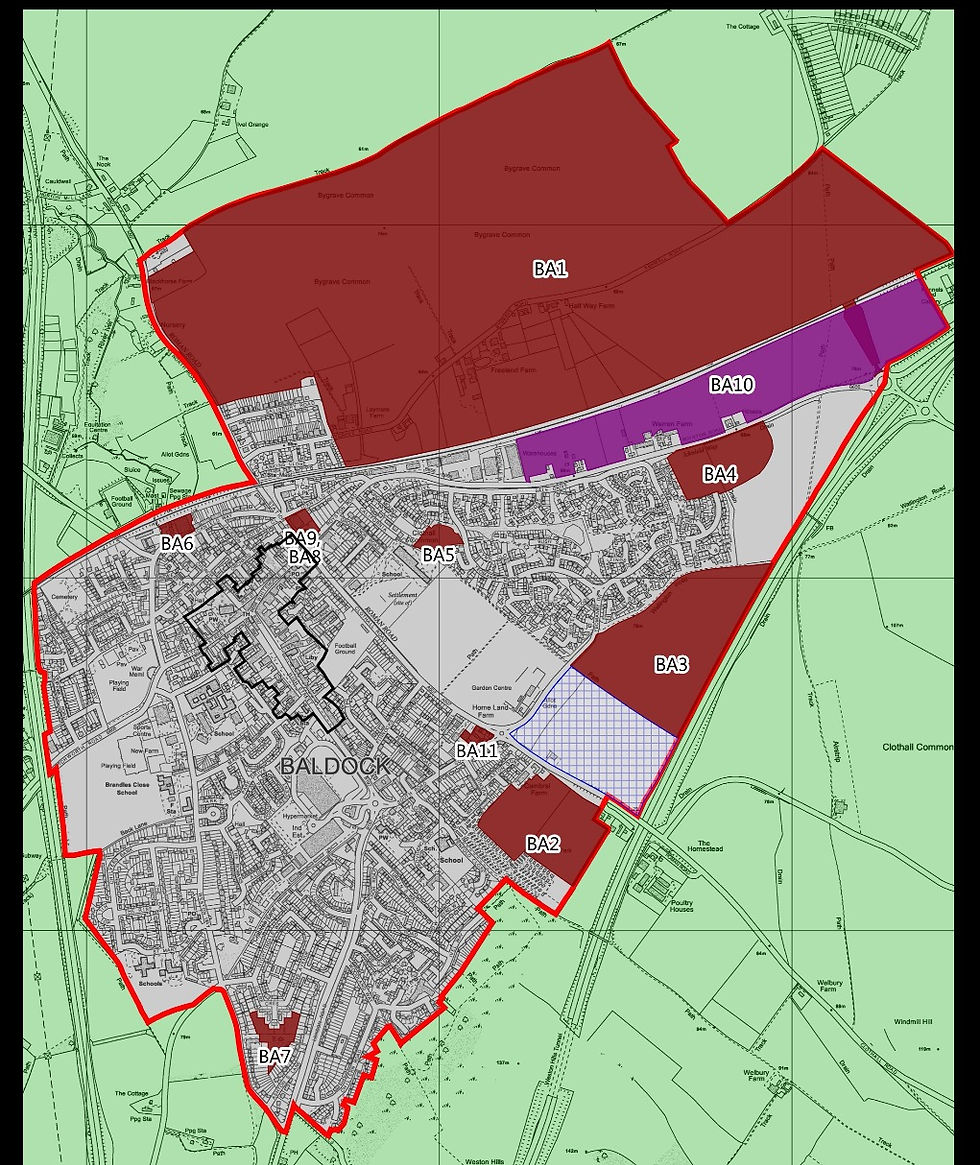WHEN 97% ISN'T ENOUGH
- ktsnews

- Mar 31, 2018
- 3 min read
The North Hertfordshire District Council have promised to develop “large areas of public open space”, by building 3,436 new homes on large areas of open public space.

What?! :
Two north and south-east regions of Baldock, composed of eight Green Belt sites, have been featured in The North Herts District Council’s draft plan as potential sites for more than 3,000 homes.
These areas are owned by the county council, which means taxpayers paid for it, Baldock taxpayers; 94 percent of which object to the new plans.
“During a six-week consultation in October and November last year, the district council’s Local Plan attracted responses from 2,549 unique individuals, of whom 2,505 – 98 per cent – objected.
In all there were 5,675 representations, of which 5,296 – 94 per cent – were objections.” ~ The Comet[1]
This should be no surprise though, after a long history of the council privatising public property. From selling “Non-relevant[2]” art, to the almost-closure of to the massively expensive Rosehill park[3], and the debated “compulsory purchase[4]” of the million-pound Hitchin museum no-one asked for to HTH Finance LTD (which is so totally not Hitchin Town Hall LTD, the “charitable” organisation originally formed to oversee the project).
Why?! :
It is true there is a great demand for homes. This is a result of the ageing population, which itself is due to advanced healthcare, which is expanding lifespans of baby boomers everywhere. People are occupying their homes for longer, as population ever-rises, while existing communities in similar situations to Baldock reject new developments.
As the millennia’s grow up into a world without affordable housing, one can only sympathize. What is it like to be denied something as fundamental as a house to live in?
The anger of the millennials is pressuring the government to rush new housing, but this clashes with the desire to conserve green belts and resist the Londonisation of one’s community. However, more people, means more voters – hence why…
“Baldock will increase in size by 80 per cent, while Hitchin, Letchworth and Royston will grow by 11, 15 and 25 per cent respectively.” ~ The Comet
Baldock is a small community, this is what makes it charming; but it’s also what makes it exploitable. The votes gained by the conservative’s new build outweigh the votes lost in ignoring the 94% majority.
Of course, this is totally unfair on the population that already lives in Baldock- as the cost of living and rent will skyrocket as the modest town becomes yet another commuter-town.
But after 94% majority rejection is wavered, what else can a community do?
A possible solution…? :
Affordable housing already exists, almost every northern constituency has more affordable housing by percentage than their southern counterparts[5] (affordable being defined as a rent that is no more than 35% of net household income). This is shown by the rent to income ratio of 25-35% in the north, ‘the north’ being anywhere other than the east, south east, and south west of England, where the ratio is 35%-45%. It is within this bracket that Baldock lies. This figure continues to rise as one approaches London, from 45% to over 85% in central London.

Yet, London still has claim to 16% of the United Kingdom’s population. London also has the lowest percentage of jobs below the living wage in the UK[6]. This statistic expresses the attraction to the urban area- the desire to work (or at least, get paid). However, it stands to reason that an individual would probably prefer to live somewhere that is less crowded, but have the same relative purchasing power. Or, in English, to live somewhere other than London, but still be able to have the same house, food, and lifestyle.
This begs the question, why not invest in the north? Use the multiplier effect (shown below, kudos to edexcel’s GCSE geography textbook) to create jobs and thus desirable housing communities. With fair funding, deals with businesses, housing contractors and the local council- one could build smaller communities just like Baldock all around the UK. Business could and would spring up, creating attraction for job-seekers.

These job-seekers, who are often soon-to-become first-home owners, would purchase the cheaper properties available in the north and the housing market would become less polarised- thus the housing crises could end. Such gentrification has been largely successful in Manchester and Birmingham.
Unfortunately, doing this would actually require money, and a fair bit of organisation on the government’s part. Therefore, I can confidently conclude this will never happen- especially with the Brexit beast from the Borus blocking any government progression like a wall of snow inhibiting traffic on the M6.
[1] http://www.thecomet.net/news/north-hertfordshire-set-to-gain-at-least-14-000-new-homes-by-2031-as-local-plan-is-voted-forward-at-letchworth-meeting-1-4972705
[2] http://www.bbc.co.uk/news/uk-england-beds-bucks-herts-42771558
[3] http://www.thecomet.net/news/temporary-stay-of-execution-for-hitchin-play-area-but-it-still-faces-axe-1-5455118
[4] http://www.thecomet.net/news/north-herts-museum-compulsory-purchase-attempt-possible-for-14-15-brand-street-1-5344714
[5]https://www.sott.net/article/263974-Housing-unaffordable-for-low-income-families-in-one-third-of-UK
[6]https://www.ons.gov.uk/employmentandlabourmarket/peopleinwork/earningsandworkinghours/articles/londonanalysis/2015-10-12




Comments